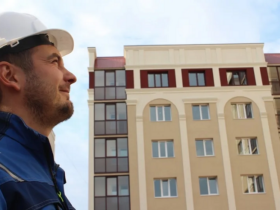Excavators -loaders located on special chassis are a large group of machines, which include loaders with a carrying capacity of 2 – 3 tons and loaders prepared for production with a carrying capacity of 4 tons, 7.3 tons and 16.5 tons.
Technical characteristics and the appearance of such technology are at the highest level. All loaders include standard equipment from the same units, which differ only in size, the degree of interspecific and intraspecific modification.
Engineers use the same design principles for all types of this special equipment, use an automatic transmission in it, a highly effective brake system, a reliable and powerful engine that requires a very small volume of fuel.
The most important part of such construction equipment is a power module consisting of a diesel engine and its system: nutrition, launch, lubrication, cooling and electric.
A special power gear is installed on the loader engine itself. It is also used on converters of the caterpillar type. The gearbox is intended for the work of the transmission and, if necessary, coordinates the characteristics between the transmission and the engine itself. Special hydraulic system pumps are also installed, which allow you to work better with hinged equipment and steering control.
On loaders and excavators, a workplace with a seat is installed, where the main control levers of such special equipment are located. Governing bodies are: steering, motor system control, brake system.
Buckets located on excavators and loaders have a strong design that contains cutting elements, housing and visor.
These main modules and systems of the technique itself are mounted on the frame, which consist of two semiras and are connected by vertical hinges. The front bridge and the loading module are mounted on the front semi -rama, and the rear bridge and power transmission modules are located on the back, which are controlled from the cabin. The rotation of both semiras is performed using special hydraulic cylinders, which provide a complete rotation of the machine. The rear bridge is installed on a special and balanced suspension, which provides a three -point support system and constant contact of all running elements.










